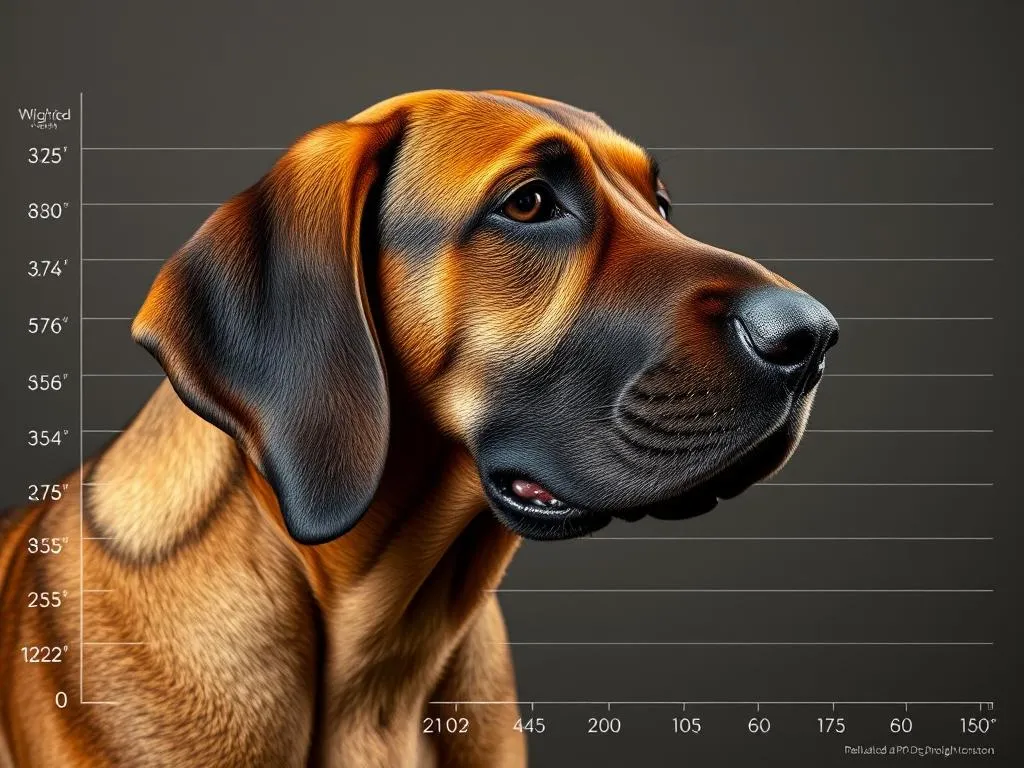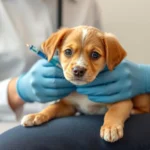
Introduction
Caring for dogs is not just a matter of feeding and shelter; it encompasses understanding their health, growth patterns, and specific needs. Bloodhounds, known for their incredible sense of smell and tracking abilities, are a beloved breed in many households. To ensure a Bloodhound thrives, it is crucial to grasp their size, weight, and growth patterns. This article focuses on the bloodhound size weight growth chart, providing insights into what every owner should know about their furry companions.
Understanding the Bloodhound Breed
History and Origin
The Bloodhound boasts a rich history that dates back over a thousand years. Originally bred in Belgium, these hounds were used by monks for tracking and hunting game. Their unparalleled sense of smell made them invaluable in tracking down lost persons and fugitives. The breed is characterized by its gentle disposition, loyalty, and unrivaled tracking skills, which are still utilized in search and rescue operations today.
Physical Characteristics
Bloodhounds are large, powerful dogs with distinctive features. Typically, a Bloodhound stands between 23 to 27 inches tall at the shoulder and weighs between 80 to 110 pounds. Their long, droopy ears and loose skin give them a unique appearance, but these traits can also lead to specific health issues. Their coat is short and comes in various colors, including black and tan, liver and tan, and red. Understanding these physical characteristics is crucial for assessing overall health and potential risks.
Bloodhound Size and Weight
Size Standards
According to breed standards, male Bloodhounds generally measure between 25 to 27 inches in height, while females range from 23 to 25 inches. These size differences are important for breeders and owners to consider, especially when selecting a Bloodhound for companionship or work.
Weight Standards
The ideal weight range for Bloodhounds varies by gender. Males typically weigh between 90 to 110 pounds, while females weigh between 80 to 100 pounds. However, several factors can influence these weights, including age, activity level, and overall health. It’s essential for owners to monitor their dogs’ weight regularly to ensure they are within the healthy range.
Growth Chart for Bloodhounds
Understanding a bloodhound size weight growth chart is vital for tracking a puppy’s development. Here’s a general overview:
| Age (Months) | Average Weight (Pounds) |
|---|---|
| 1 | 10 |
| 2 | 20 |
| 3 | 30 |
| 4 | 40 |
| 5 | 50 |
| 6 | 60 |
| 7 | 70 |
| 8 | 80 |
| 9 | 85 |
| 10 | 90 |
| 11 | 95 |
| 12 | 100 |
This chart helps owners identify key milestones in growth and development, allowing for timely interventions if a puppy is not growing as expected.
Health Considerations for Bloodhounds
Common Health Issues
While Bloodhounds are generally healthy, they are predisposed to certain health concerns. Common issues include:
- Hip Dysplasia: A genetic condition where the hip joint doesn’t fit properly into the hip socket, leading to arthritis and pain.
- Bloat: A life-threatening condition where the stomach fills with gas and twists.
- Ear Infections: Due to their floppy ears, Bloodhounds are prone to ear infections. Regular cleaning is essential.
- Obesity: Bloodhounds have a tendency to gain weight, which can lead to other health issues.
Preventative care, such as regular vet visits and maintaining a healthy weight, can mitigate many of these risks.
Regular Health Check-Ups
Routine veterinary visits are crucial for early detection and management of potential health issues. A recommended vaccination schedule includes vaccinations for rabies, distemper, parvovirus, and kennel cough. Regular screenings for hip dysplasia and heart conditions can also help maintain a Bloodhound’s health throughout its life.
Nutrition and Diet
The nutritional needs of Bloodhounds vary throughout their life stages. Puppies require a high-calorie diet rich in protein to support growth, while adults need a balanced diet to maintain energy levels. Owners should consult with a veterinarian to determine the best dog food options.
Here are some feeding strategies:
- Puppies: Feed 3 to 4 small meals a day to support growth.
- Adults: Transition to 2 meals per day to maintain a healthy weight.
- Seniors: Consider a senior diet that is lower in calories but rich in fiber and nutrients.
Exercise and Mental Stimulation
Daily Exercise Requirements
Bloodhounds are active dogs that require regular exercise to stay healthy. They thrive on at least 60 minutes of exercise daily, which can include walks, playtime, and training sessions. Activities like scent work and agility training can provide both physical and mental stimulation.
Mental Stimulation and Training
Mental stimulation is just as important as physical exercise for Bloodhounds. Engaging them in activities that challenge their minds, such as puzzle toys or obedience training, can prevent behavioral issues. Socialization is crucial, especially during puppyhood, to ensure they are well-adjusted and friendly with other dogs and people.
Grooming and Maintenance
Grooming Needs
Bloodhounds have short coats that require minimal grooming. Regular brushing (once a week) helps remove loose hair and keeps their skin healthy. Bathing should be done as needed, typically every few months or when they get particularly dirty.
Dental and Ear Care
Dental hygiene is essential for Bloodhounds, as they are prone to dental disease. Regular brushing and dental chews can help maintain oral health. Additionally, due to their floppy ears, Bloodhounds need regular ear cleaning to prevent infections. Owners should consult their veterinarian for proper ear care techniques.
Aging and Senior Care
Recognizing Aging Signs
As Bloodhounds age, they may exhibit changes in behavior, mobility, and energy levels. Common signs of aging include reduced activity, difficulty standing up, and changes in appetite. Owners should be vigilant and adjust their care routines as needed.
Senior Health Care Tips
Senior Bloodhounds may require a specialized diet that supports joint health and maintains a healthy weight. Regular vet check-ups are vital to monitor for age-related health issues such as arthritis or heart problems. Gentle exercise is crucial to maintain mobility, and mental stimulation should continue to keep their minds sharp.
Conclusion
Understanding the health care needs of Bloodhounds is essential for their well-being. From recognizing their size, weight, and growth patterns to addressing common health issues and ensuring proper nutrition and exercise, responsible ownership plays a significant role in a Bloodhound’s quality of life. By prioritizing these aspects, owners can enjoy many happy years with their loyal companions.
Bloodhounds require diligent care and attention, but the love and loyalty they offer in return make it all worthwhile.









